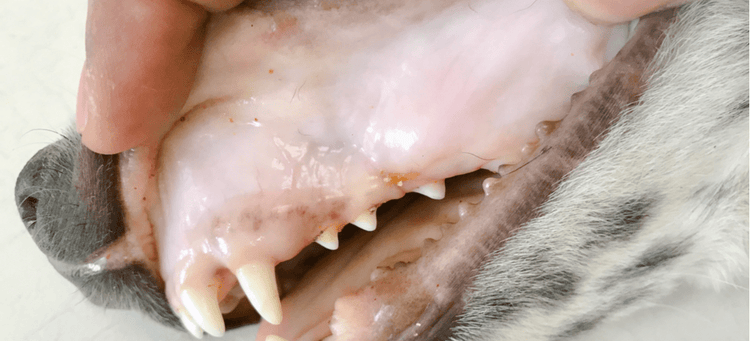
Why Are My Pet’s Gums Pale?
Your pet’s gums can tell you quite a lot about their oral health and overall well-being. Though pigmentation will vary from pet to pet, canine and feline gums are typically light pink when they’re healthy. Changes in color can indicate a range of underlying conditions and health concerns. Pale gums, for example, may be a sign of anemia and a reason to consult your veterinarian.
Your Dog or Cat’s Gums
Commonly known as the gums, the gingiva is a soft mucus membrane that surrounds and protects the bones of the jaw. Healthy gums form a tight seal around the teeth, mandible (lower jawbone), and maxilla (upper jawbone). This prevents food and bacteria from collecting and forming dangerous plaque and tartar. Over time, plaque and tartar buildup can cause a host of health concerns affecting not just a pet’s gums, but their entire standard of living.
Pale Gums in Dogs and Cats
In both dogs and cats, white or particularly pale gums are most often caused by blood loss and anemia, which is a lack of red blood cells. Additional symptoms and their severity will depend on the underlying cause of the anemia. Cat and dog owners may also notice that anemic pets suffer from sluggishness and loss of appetite.
Determining that your cat or dog is anemic is just the start of getting them back on the mend. Anemia is a possible symptom for a large number of illnesses, including various neurological, respiratory, and cardiovascular conditions. It is imperative to consult your veterinarian promptly if you suspect your pet is anemic.
Since there are so many potential causes, it is not possible to prevent anemia altogether. The best pet parents can do is to work with their veterinarian and keep a vigilant eye out for warning signs.
What Are Your Pet’s Gums Telling You?
You can learn a lot about your dog or cat’s oral health and overall well-being with a quick peek at their gums.
- Red Gums: Bright or bloody gums could mean that your pet is overheated or point to infections in the mouth. Stomatitis (inflammation of the mouth) and gingivitis (inflammation of the gums) both typically result in red, irritated gums in addition to symptoms like bad breath and oral sores. You may notice symptoms like weight loss, excessive drooling, or behavioral changes before taking a closer look at your pet’s mouth.
- Blue or Purple Gums: Inadequate oxygen in your pet’s bloodstream may cause a bluish tint to the gums and skin. The medical name for this condition is cyanosis and it’s caused by potentially life-threatening conditions like pneumonia and congestive heart failure.
- Yellow Gums: In pets, jaundice can give the eyes, inner ears, skin, mouth, and/or gums a yellowish color. The coloration most often results from issues with the liver and should be considered an urgent pet health concern.
- Dry Gums: A tacky texture or notable dryness could indicate dehydration. Sometimes, a bowl of water is enough to correct the issue, but severe cases may require immediate veterinary intervention.
3 Pet Dental Health Facts
- Dental disease starts early: According to the American Animal Hospital Association, a majority of dogs and cats have at least some degree of oral or dental disease by age three.
- Dental and oral conditions are painful and costly: Problems with your pet’s mouth, gums, and teeth can dramatically impact their life and yours. Inflammation can leave them suffering from chronic pain and find you contending with both behavioral changes and hefty veterinary bills.
- At-home dental care is essential: Your veterinarian can’t provide for your pet’s care all on their own. You’ve got a job to do too; keeping up with regular brushing and keeping plaque buildup at bay.